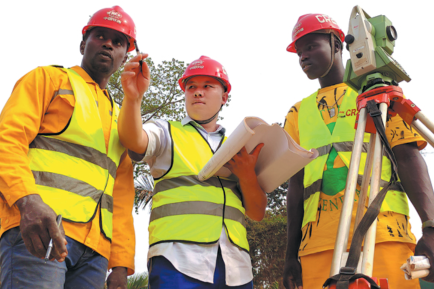From the palm of your hand to the stars

Imagine this: you're on a remote hiking trail, hours from the nearest town. Your phone has long shown "No Service". Suddenly, a moment of need arises. You pull out your smartphone, not with hope, but with practical expectation.
A few taps in the settings menu, and you enable the "satellite network" feature. Within seconds, a tiny icon confirms a connection, not to a cell tower but to a satellite orbiting high above. You send a message, make a call. The vast, silent mountains are no longer a barrier. This is the new reality for a growing number of Chinese consumers, where the sky is becoming the ultimate network.
For people like Sun Jinyang, a university student in Shanghai, this technological leap has sparked both excitement as well as caution. "The safety net this offers is incredible, especially for road trips or adventures in the suburbs. But the price? That's the real question."
His thoughts mirror a national conversation, where the promise of universal connectivity is being carefully weighed against its cost. This narrative is no longer about luxury; it's about a fundamental shift in how we perceive connection, safety, and accessibility.
The magic behind this capability lies in a fundamental architectural divergence. Traditional mobile networks are a terrestrial tapestry, woven from millions of earthbound cell towers. Satellite communication, however, bypasses this entirely. It uses specialized chips embedded in smartphones or modules in vehicles to create a direct line to the cosmos. This simple yet profound difference shatters geographic limitations, casting a communications net over oceans, remote deserts, and cruising altitudes — places where the ground-based network simply vanishes.
Historically, this powerful technology was confined to the realms of maritime navigation, aviation and critical emergency response. But a quiet revolution is underway. The fusion of satellite systems with artificial intelligence, big data, and cloud computing is catapulting this capability from niche to mainstream. We see it in agriculture, where farmers use satellite data to orchestrate perfect crop yields, and in environmental monitoring, where the planet's vital signs are checked in real-time from space.
The market is responding with palpable momentum.
Companies like Huawei, Xiaomi and Oppo have already launched 36 smartphone models with built-in satellite connectivity. The most remarkable part? Users can activate it seamlessly — no new SIM card, no new number. It's just there, a dormant superpower in their pocket.
Meanwhile, on the roads, another transformation is accelerating. In April 2024, China Telecom's satellite unit pioneered a global first: satellite-direct automotive services. With the press of a single button, drivers can have a satellite phone reach their automaker's call center and transmit the vehicle's precise longitude and latitude for assistance.
"We have established partnerships with multiple automotive companies," the company said, "and we expect sales of satellite-direct vehicle models to exceed 100,000 units by the end of this year."
Yet, the path to ubiquity is paved with the challenge of affordability.
Currently, the service commands a premium; making a satellite-direct call outside a promotional package can cost around 9 yuan ($1.26) per minute. This price point is the primary barrier standing between a revolutionary feature and its widespread, everyday use. The collective consumer whisper is clear: we see the value, now make it accessible.
The implications of overcoming this hurdle are profound.
For the individual, it means uninterrupted stories — the traveler sharing their journey from a remote peak or the businessperson taking a call mid-flight. For industry, it unlocks unprecedented efficiency. Power grid operators, for instance, can monitor remote transmission lines via satellite, forgoing the immense cost of building cellular infrastructure in unforgiving terrain. This "space-terrestrial integration" is more than a technical term; it's a blueprint for a more resilient and connected society.
The growth is unstoppable. By 2024, China Telecom's satellite-direct services had already been embraced by over 2.4 million users. In the first half of 2025, the company reported a robust 20.5 percent surge in satellite business revenue — a clear signal of a market ready to explode.
The journey ahead is one of perseverance and innovation. It is a shared commitment to building a future where a connection is as fundamental as the air we breathe, a future where, for ordinary people, communication is not just global but universal, reaching from the palm of your hand to the stars.




































